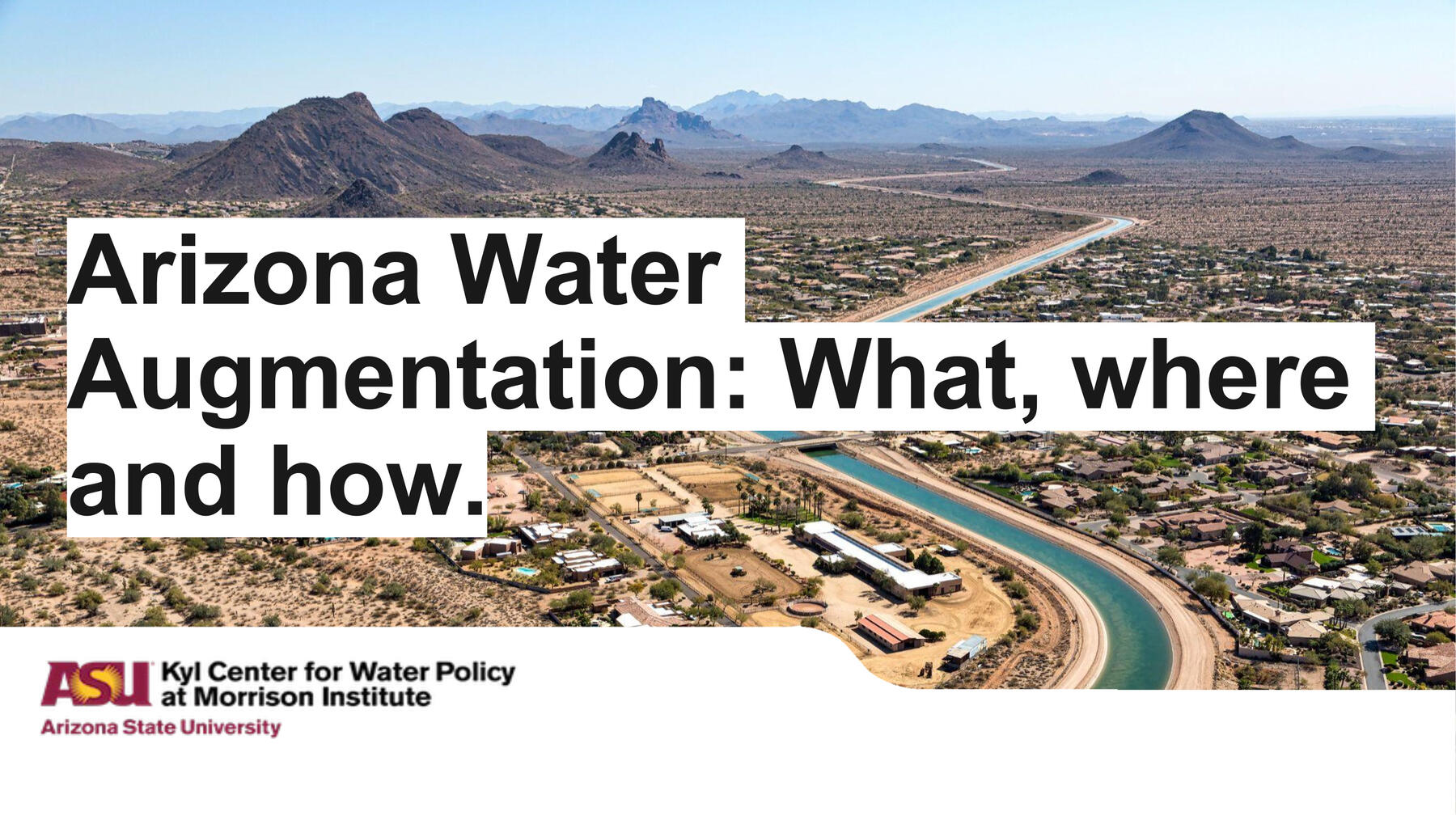
Arizona Water Augmentation - Part 3: Who Pays for it?
Part 3: Who pays for it?
People won’t move to a place if there’s not enough water for their needs. In a place like Arizona, where surface water supplies are relatively scarce, sustainable management of water is a prerequisite to developing a population and an economy.
Generally, this entails developing infrastructure projects for purposes such as water storage, treatment, delivery and even importation from distant places.
But someone has to pay for that infrastructure. As a general rule, the people who benefit from the water are expected to pay for it. However, there is some variation in how water projects are financed and repaid.
When projects are funded by the federal government, non-Tribal farmers, cities, towns and industries that benefit from the water are typically required to re-pay the financing.
Typically, Tribal nations have not been required to repay initial infrastructure costs because treaties between Tribes and the United States legally obligate the federal government to protect and provide resources, including water, for Tribal communities.[1] However, Tribes often assume the financial obligation to pay for the ongoing operation and maintenance costs for a water infrastructure project once it is completed.
Among the federally financed projects in Arizona are Roosevelt Dam, which stores water from the Salt River and the Central Arizona Project (CAP), which carries Colorado River water from Lake Havasu on the state’s western border to central and southern Arizona. The federal financing for Roosevelt Dam was secured by local farmers who pledged their land as collateral. Roosevelt Dam was dedicated in 1911 and the Salt River Valley Water Users Association made the final payment on the original $10.3 million loan in 1955, 44 years after the dam’s dedication. The $1.646 billion loan for the “non-federal” share of the CAP is due to be fully repaid in 2045, 60 years after CAP’s first water delivery in 1985. [2] Funds for paying down the loan come from the cities, towns, private water companies, mines and power companies that benefit from the water and from property taxes assessed in the three-county area served by the CAP.
Smaller, more local projects have been financed through municipal cash and bonds, private water companies, Tribal government appropriations or the Water Infrastructure Finance Authority of Arizona (WIFA), which has historically managed a state revolving fund loan program. And in recent times, new forms of project financing have emerged: San Diego County’s billion dollar ocean desalination plant was financed through a combination of public and private bonds. In these instances, the expectation is that project financing will be repaid by water users.
In 2022, the State of Arizona expanded WIFA’s responsibilities and funding to provide financing for imported water supplies. In keeping with the principal that the beneficiaries of a new water supply should pay for it, the new funding includes requirements that projects funded by the state be fully repaid.
Which gets to a fundamental challenge of water augmentation projects: When a water supply project relies on future water use for repayment, there is a lag time between completion and the critical mass of water users needed to pay off the financing. A lender must have some degree of confidence that the anticipated water use needed to repay the loan will occur. Gallon for gallon, that new supply of water is likely to cost significantly more than current supplies and a funder may be reluctant to make a loan if less expensive measures, such as conservation or reallocation of existing supplies, are available to meet demand.
Communities with larger populations or strong potential for growth and economic development will have the easiest time providing the assurances that lenders need. Communities that lack these attributes will have a harder time, especially when they’re competing with municipalities that already have a large group of water ratepayers in place.
The Augmentation Concepts page of the Kyl Center’s Arizona Water Blueprint provides details about many of the new water supply concepts proposed or currently under development in the state.
[1] The federal Indian trust responsibility is a legally enforceable fiduciary obligation on the part of the United States to protect Tribal treaty rights, lands, assets and resources, as well as a duty to carry out the mandates of federal law with respect to American Indian and Alaska Native tribes and villages.
[2] The CAP was built to serve a variety of purposes including federal purposes, such as providing water to some Arizona Tribes. Costs associated with those federal purposes are not included in the CAP repayment obligation.
This blog series is co-sponsored by the Arizona Water Innovation Initiative, a multi-year partnership with the state led by Arizona State University’s Julie Ann Wrigley Global Futures Laboratory in collaboration with the Ira A. Fulton Schools of Engineering.